#taal church
Explore tagged Tumblr posts
Text

Old Church of Taal, Batangas province of the Philippines
American vintage postcard
#postkarte#postal#american#ansichtskarte#tarjeta#ephemera#postcard#photography#old church of taal#batangas province#taal#carte postale#vintage#philippines#briefkaart#sepia#province#photo#batangas#church#postkaart#historic
7 notes
·
View notes
Text
*building must be religious as it's main purpose.
#poll#polls#religion#our house is literally ine street away from the town's church#and it's such a typical old timy village church I love looking at it from our higher windows on the south side#gives me a cosy feeling for some reason#from all the places I've lived before there was only one where I could see multiple churches#because I lived on the 5th floor and could look over a good portion of the city I lived in back then#so I could see the roofs of several taal churches#but that's not the same
11 notes
·
View notes
Text
Warhammer Gaslamp: Imperial Society
(For the Introduction, see here)
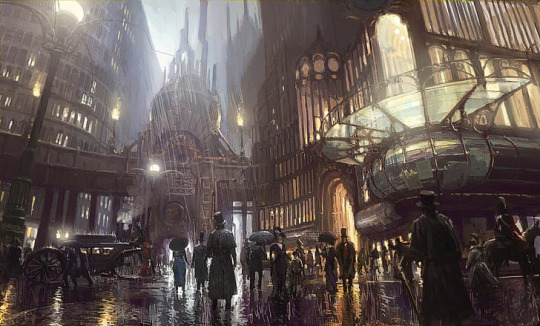
The State
In many ways, the Empire of Man in 2725 IC is scarcely recognizable compared to the rickety feudal monarchy of the 2500s. While the Grand Provinces still exist on paper, the vectors of power have transformed radically. In exchange for generous subsidies from the central government, seats in the Imperial Parliament's House of Nobles, and other privileges, the Elector Counts and the provincial nobility have ceded much of their de facto independence - such that it is now provincial law that must be approved by the Emperor's Prime Estates in Altdorf for harmony with Parliamentary law and Imperial regulation, not the other way around.
While the electoral franchise has been gradually extended to all adult men with an income of 12 marks (one for each of Sigmar's tribes), as well as veterans of all income levels, the Imperial Parliament's power of legislation and the purse is balanced by the immense state capacity of the Imperial Bureaucracy. A massive civil service of some 2 million public sector workers who answer to the Emperor and his Chancellor (who also serves as the Chairman of the Council of Ministries) the Imperial Bureaucracy is fanatically meritocratic and even though the sons of the elite are disproportionally represented (especially in the top ranks), mere birth and privilege are not enough to succeed in government. Even the bluest of bloods must still pass the draconian Entrance Exams and follow those up with a strong record of Yearly Performance Assessments in order to survive the political knifefighting and rise through the ranks.
In addition to the General Staff of the Imperial Armed Forces, the Treasury Ministry, and the Ministry of Industry and Public Works, one of the most influential of the Ministries is the Health Ministry. Emerging out of a longstanding compromise between the Farmer-Artisan Party and the Patriotic Party, the Health Ministry is in charge of the Sozialversicherung Gemeinschaft, which provides modest old age, widows and orphans, disability, and kurzarbeit pensions to all citizens of the Empire...as long as they give yearly blood samples to the Imperial Plasmic Survey. The Survey tests tens of millions of samples for signs of epidemic, industrial, environmental diseases, and malnuitrition, which it uses to triage people into Imperial Hospitals and District Health Centers.
Secretly, the Imperial Plasmic Survey also tests citizens for were-Beastmanism and other forms of mutancy, and signs of vampirism and vampiric transfusion (and increasingly less commonly, unlicensed witchcraft). The Health Ministry then passes on the information of anyone who fails their tests to the Schwarzmänner - the secret police descended from the Ancient Initiatic and Holy Order of the Templars of Sigmar - who will hunt you down like the dog you are.

The only way for one of the "Untervolk" to escape the hunt is to flee into the sewers, subway tunnels, and ancient sub-sub-sub basement communities known as the Undercities, where they fight a desperate war for survival (and food) against the Skaven.
The Church(es)
In the last two hundred years, most of the Imperial Cults have fallen under the benevolent paternalism of the Church of Sigmar; while Morr, Verena, Shallya, Myrmidia, Taal, Rhya, Mananna, and the like are honored by those who have need of their services, their clergy are largely dependent on the Church of Sigmar for their financial livelihood.
As I have already mentioned, the Church of Sigmar is increasingly polarized between the Orthodox Volkmarites and Radical Hussites. Socially conservative and stronger in the north and west of the Empire, especially among the bourgeoisie, nobility, and larger farmers, the Orthodox Volkmarites believe strongly in obedience to authority. In their doctrine, Sigmar's Plan has predetermined for every person in the Empire their proper place on the Great Chain of Being, and Sigmar does not make mistakes.
By contrast, the Radical Hussites are stronger among workers, agricultural laborers, and small farmers in the south and east of the Empire. The Hussites believe that "the Strength of Sigmar is in the People," and that all believers stand equal in the ranks of His Army. Moreover, Hussites believe in "Strength Through Progress," that in order to be strong, the Empire must constantly reform itself to meet the crisis of the day. Proof of the righteousness of their beliefs is to be found in the Avatars of Sigmar, who are continually born into the world to serve as the Messiahs of the People, and show them the new path – Valten the Martyr being the most famous of these Avatars. Hussites await the coming of a New Avatar of Sigmar in the coming Time of the Comet.
While most of the conflict between Volkmarite and Hussite are carried out in pulpits and Church councils, both factions also recruit and sponsor Hammermen, the modern descendants of the Warrior Priests of old, who still carry two-handed warhammers as symbols of their faith, although they have long since traded red robes for long Army-surplus greatcoats. Among the common people, the Hammermen are seen as incorruptible tribunes who will see that justice is done in all those cases that the Reichspoletzei don't consider worth their time, but they are equally likely to turn their warhammers on their rivals.
In recent decades, the religious status quo has been violently disrupted by the Neo-Ulricanism of Nietzsche Zarathustein. Growing ever stronger in the North, especially around New Middenheim-Ulricberg, Neo-Ulricanism emphasizes the need for the individual to move beyond conventional social authority and become independent moral agents in the world by continually testing their strength against the darkness. As Zarathustein writes in Man unt Wulf-Man, “he who wars against the abyss shall never fall into the abyss.”
Institutions of Learning
In addition to the Imperial War Academy and the various State Universities, the Imperial University of Neüscience and Techno-Sorcery bears particular mention, as it is the institution whose Technomancers have given the Empire the upper hand in economic development and mechanized warfare. When the winds of the Aethyr shifted westward starting in 2594, gradually bypassing the Old World and drawn across the Great Sea to the "gulf stream" effect of the Vortex of Ulthuan, magic began to weaken on the Continent, even as a new breed of super-engineers began to produce inventions and discoveries once only possible through sorcery.
While initially denounced by the Colleges of Magic and rigorously investigated by the Schwarzmänner, the Technomancers were vindicated by the fact that repeated tests done by the Imperial Plasmic Survey demonstrated not even latent aptitudes for witchcraft. Under pressure from the Emperor and the General Staff, and with the strong patronage of the Monopolhauses, the Imperial Colleges of Magic, the University of Altdorf, the Nuln College of Engineering, the Imperial Gunnery School, and the University of Nuln were merged into the Imperial University of Neüscience and Techno-Sorcery (known better as the “Exploding University”), with rival campuses in Altdorf (specializing in theoretical neüscience) and Nuln (specializing in applied neüscience).
The common people of Altdorf and Nuln would be more outraged by the dangerously weird and weirdly dangerous experimental research perpetrated by the faculty and student body alike, if the University wasn't such a boon to the local construction, manufacturing, and sanitation industries. As it is, they only storm the campuses with torches and bricks when the University forgets to pay its parking tickets, or when the wrong team wins the University Blood Bowl Cup.
31 notes
·
View notes
Text
World Tourism Day

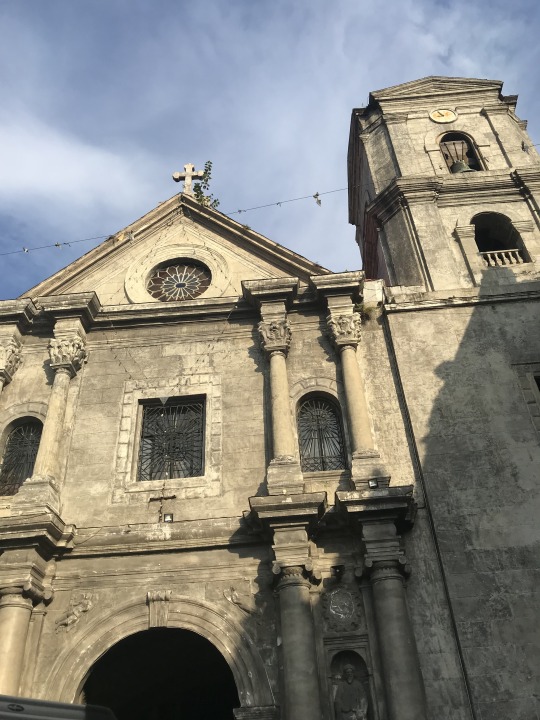
Travel Guide: Manila, Philippines
Manila, the Philippines' vibrant metropolis, is a dynamic mix of old and new, with ancient Spanish architecture meeting modern skyscrapers and busy marketplaces coexisting with elegant retail malls. Whether you're interested in the city's rich history, eclectic cuisine scene, or vibrant culture, Manila provides an intriguing and comprehensive experience.
When to Visit:
The dry season (November-May) offers less humidity and rain, with cooler temperatures from December to February. The wet season (June-October) offers indoor activities like museums and shopping and is less crowded.
Top Attractions:





Intramuros: The historic heart of Manila, built during the Spanish colonial period. Visits include Fort Santiago, San Agustin Church, and Casa Manila Museum.
Rizal Park (Luneta): A sprawling park dedicated to José Rizal, hosting the National Museum Complex.
Binondo, The World's Oldest Chinatown: A vibrant neighborhood known for its Chinese-Filipino culture and delicious food.
Manila Ocean Park: An aquarium and marine-themed park offering a variety of activities.
Cultural Center of the Philippines (CCP): Home to Filipino performing arts, hosting concerts, ballets, plays, and art exhibits.
Local Experiences:
Experience the Philippines' iconic jeepney ride for a colorful and affordable way to explore Manila. The city is a shopping paradise, with luxurious malls like SM Mall of Asia and bargain hunting at Divisoria Market and Greenhills Shopping Center. Enjoy local crafts, electronics, and clothes at these popular shopping destinations.
Food & Dining:



Manila is a hub of Filipino flavors, offering a diverse range of street vendors and fine dining options. Famous dishes include lechon, a traditional pig dish; adobo, a soy-braised chicken or pork dish; and halo-halo, a refreshing dessert made with shaved ice, sweetened fruits, jelly, ube, and leche flan.
Must-Try Restaurants:



Ilustrado Restaurant in Intramuros offers a blend of Spanish, Filipino, and international cuisine, while Barbara's Heritage Restaurant provides a cultural dining experience with traditional Filipino food and folk dance performances. Aristocrat is renowned for its Filipino comfort food.
Day Trips from Manila:

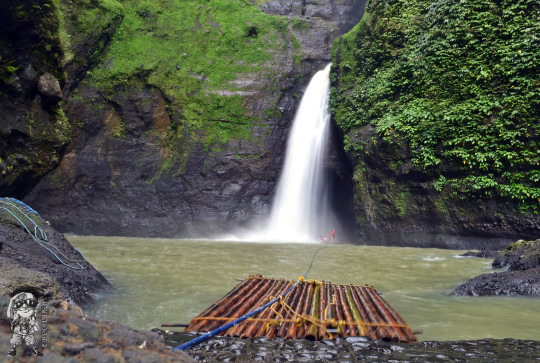

Tagaytay, Pagsanjan Falls, and Corregidor Island: • Tagaytay: 2-hour drive from Manila, offers cooler weather and Taal Volcano views. • Pagsanjan Falls: 3-hour boat ride through river gorge, ending with refreshing waterfall. • Corregidor Island: Historical island off Manila Bay, played a significant role during WWII. Guided tour of ruins, tunnels, and military barracks.
Nightlife:
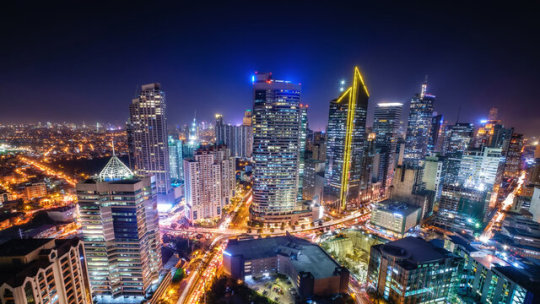
Manila's nightlife scene is vibrant, particularly in Makati, Bonifacio Global City, and Malate. It offers trendy rooftop bars, live music, and dance clubs. Poblacion, known for its hip vibe, features speakeasies, bars, and clubs. Resorts World Manila, a luxury resort and casino, offers sophisticated dining, theaters, and bars for a sophisticated night out.
Getting Around:

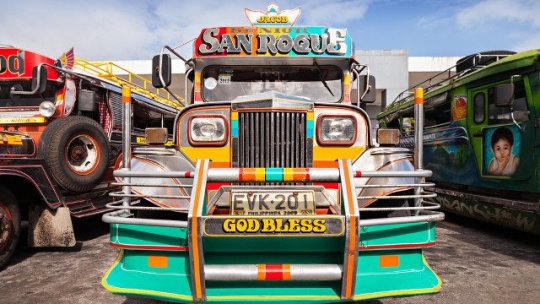

Manila's traffic can be busy, so leave additional time to drive. You can get about using Grab (the taxi service app), jeepneys, buses, or LRT/MRT trains. Local communities also have tricycles and pedicabs accessible for shorter trips.
Cultural Etiquette:

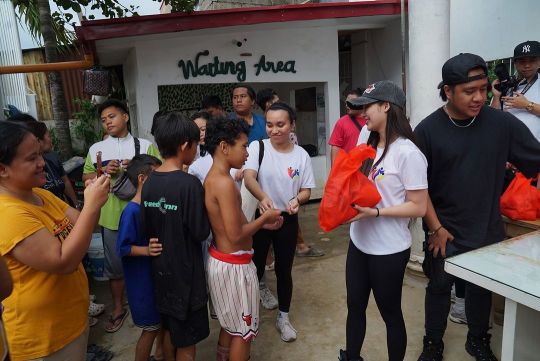
• Mano Po: Traditional respect gesture where younger people place elder's hand on forehead. • Bayanihan Spirit: Filipino hospitality, friendly locals, and helpfulness encouraged.
Shopping:

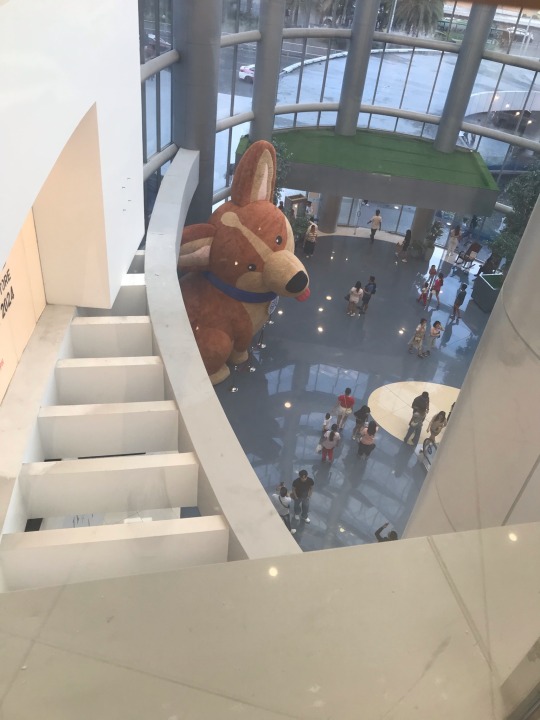
Divisoria is a popular market known for affordable goods, while SM Mall of Asia is a massive mall offering luxury goods, local brands, an ice skating rink, and an IMAX theater.
Conclusion:
With its blend of colonial history, vibrant urban life, and ingrained culture, Manila is a city of contrasts. Whether you're taking in the lively culinary scene or discovering the old-world elegance of Intramuros, Manila provides a diverse and colorful experience that will make for lifelong memories.
10 notes
·
View notes
Text
added more color to our journey.
IN THE HEART OF BATANGAS



Traveling is not just about going to a place but also about discovering new experiences and cultures. One of the most unforgettable trips I've had was visiting Batangas. On April 16, 2022, I had the opportunity to visit Batangas with my family.
Batangas is known not only for its cattle trading industry but also for its delicious food and beautiful scenery. We just commuted to Batangas. If I'm not mistaken, the fare from Biñan City to Sto. Tomas, Batangas City on an air-conditioned bus. We also didn't miss the opportunity to see Taal Volcano from afar. The view, along with the sunrise and the blue sky, is truly magnificent. On this journey, my appreciation for the richness of our culture and the beauty of our town deepened even more. Upon our arrival, the first place we visited was the house being built by our relatives. But instead of just staying there, we decided to explore Batangas to better experience the culture and traditions of the place. Our first stop was the National Shrine of Saint Padre Pio in Sto. Tomas. Since it was still morning, it was so pleasant to walk around inside the shrine while feeling the peaceful surroundings. I also noticed that the way of holding mass here is different from what I'm used to in Biñan City, so it became a new experience for me. After our visit to the church, we tried the famous lomi and gotong Batangas. Indeed, these were truly delicious thick, flavorful, and well worth the price. While eating, I also noticed the unique accent of the Batangueños in their speech, which added more color to our journey.
Our visit to Batangas was not just an ordinary trip but a meaningful experience. We not only witnessed the beautiful scenery of the place but also tasted their traditional food and witnessed the rich culture of the Batangueños. In every journey, there is something new to discover and this time, I learned that sometimes, you don't have to go far to experience the beauty of the world. Batangas is a place I will definitely return to, not just because of the scenery but also because of the memories and experiences it offers.
2 notes
·
View notes
Note
This might be a dumb question but: why would you need more than one bible?
Hi Nonny! No genuine questions are dumb questions. And this certainly isn't one.
Putting this under a read more because I seem to have rambled a bit.
I'm assuming this is in response to this post where I mentioned I bought 2 Bibles at the thrift shop today.
For me, this is just a place where my love for languages and my faith intersect.
Quick note: I'm not a historian or a theologist. I just like languages. And Bibles.
Those 2 Bibles that I bought today are different Dutch translations of the Bible. You see, the original Bible texts were in Hebrew and Biblical Aramaic (the Old Testament) and in Koine Greek (the New Testament).
(The original language of the deuterocanonical books is debated, but seems to be a mixture of Koine Green, Semitic languages like Hebrew and Aramaic, and Latin, but I digress).

This is my current collection of Bibles. (Had to censor the bottom left one because my full legal name is engraved in the cover of that one.) From left to right, top to bottom, they are (with years of first print, and abbreviations):
De Nieuwe Bijbelvertaling 2004 - NBV
De Bijbel in Gewone Taal 2014 -BGT
De Bijbel in Gewone Taal - De Eerste Teksten 2013 - BGT
The New Revised Standard Version Bible 1989 - NRSV
De Bijbel in de Nieuwe Vertaling 1951 - NBG51
De Statenvertaling 1637 - SV
All of these are different translations of the original texts, and I like comparing the versions. I grew up reading the first one, the NBV, and the church I currently attend uses both the NBV, NBV-21 and the BGT concurrently.
Even if you don't speak Dutch, you'll be able to tell that these 4 versions of Genesis 1, the first chapter of the first book of the Old Testament, are very different (left to right, top to bottom - NBG51, SV, NBV, BGT):




Whenever I'm reading the Bible for religious reasons, I'll usually stick to one version. But I do occasionally look up the passage I'm reading in the other versions, just to compare the translations.
Are there any translations I'd like to add to my collection? In Dutch, I'd like to add the Herziene Statenvertaling, the Willibrordvertaling, the Groot Nieuws Bijbel, Het Boek, the Naardense Bijbel, and the BasisBijbel. Along with that, there's a translation of the Torah by Huub Oosterhuis and Alex van Heusden that I'd love to own, because they've made an attempt to stick to the style and imagery of the Hebrew as much as possible.
As for English Bibles, well, I think I'll focus on the Dutch ones first. I was gifted the one English one I own when I lived in the US, when I was 7.
...this was probably a more extensive reply than you intended to get with this question but uh...yeah. Languages, woo!
#belle answers questions#belle talks to nonnies#<- the amount of times i've mistyped that as “nannies”...#cw: religion#cw: christianity#religion#christianity#bible
4 notes
·
View notes
Text
Visiting the Philippines
Before leaving Asia I visited the Philippines with my dad, as he is friends with a couple who live there and invited us to visit them.
The Philippines consists of more than 7,600 islands. We were on the largest and most populous island, Luzon, which is where Manila is located. My dad’s friends whom we stayed with reside outside of Tagaytay, a city that is technically less than two hours south of Metro Manila, but with Philippine traffic it takes longer than that.
I thought Vietnam had crazy traffic, but getting around there was much easier than in the Philippines. My dad’s friends have a hired driver because the roads are honestly insane to navigate there. In addition to cars and motorbikes, the popular modes of transportation that locals use in the Philippines are Jeepneys and tricycles. Jeepneys are essentially the public buses that people can easily hop on and off, and they’re often decorated to be flashy and colorful. They can get quite very crowded, though; we saw several that had people seated on the roof and hanging out of the back. Tricycles are basically motorcycles that have been outfitted with covered sidecars to transport more passengers. These are also often colorful and overflowing with people. While it is cool to see these forms of transportation that are unique to the Philippines, they contributed a lot to the difficult traffic.

Despite spending many hours in the car, our hosts showed us around to some great sites. Tagaytay overlooks Taal Volcano, an active volcano that erupted as recently as 2020. One day we took a boat out on Taal Lake to see the Volcano Island. Due to the volcanic activity this island is supposed to be closed to inhabitants, but people still live there to farm and fish and preserve their homes.
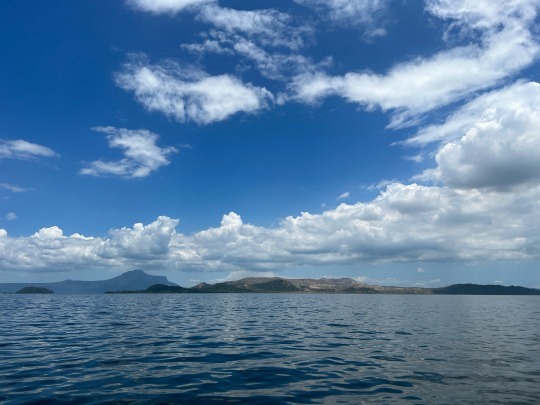

We also went to a beach further south to swim. The water was very clear and calm, making for a pleasant swim. The beach we were at also had boats and water toys available, so we road a banana boat out to sea that allowed us to see more of the coastline and feel some sense of adventure.


For our last day we visited Metro Manila to see some historic sites. We went to Fort Santiago, which provides a lot of insight into colonial history. There is also a museum on site there about José Rizal, a national hero of the Philippines who was executed in 1896 for his role in inspiring the revolution against the Spanish rule. We also visited several churches. The majority of Filipinos are Catholic so there are many beautiful churches around.

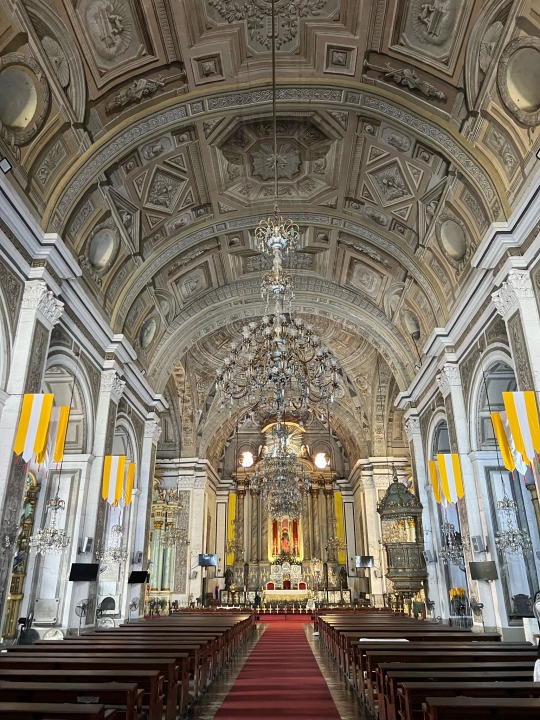
Of course I cannot forget to cover the food. Filipino food is AMAZING and I am so sad that it is not easy to find where I live in the US. I left the Philippines well-fed with a stomach full of Halo-halo, Adobo, Chicharon, Lanzones, Mangoes, Pomelo, Sinigang, Lumpia, Kare-kare, Pancit, Milkfish, Bibingka, and Buko Pie. This is not Filipino food, but we also got KBBQ as a treat and it was only about $10 USD. One of the things I will miss most about SE Asia is the availability of incredible food.
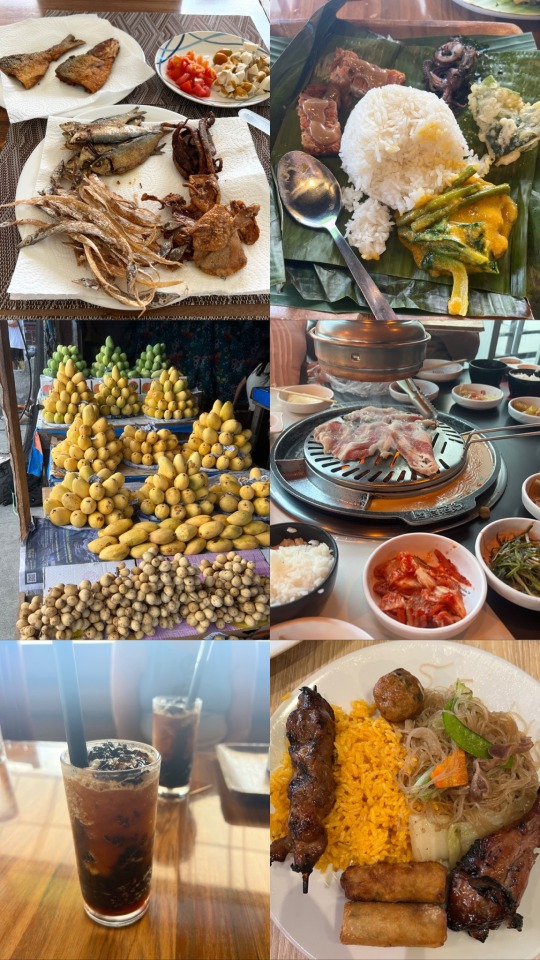
Overall I really enjoyed the Philippines and was glad we got to stay with people who live there to see some things that the average tourist would not. Besides the sites and food that I wrote about I also loved how warm and welcoming Filipinos were, and I would love to go back some day. Our hosts recommended Palawan or Boracay for the most beautiful spots so those are now on my bucket list.


4 notes
·
View notes
Text
73-2371 - To the national heroes of society
Here is my third sketch done at the Taal Elpasubat 2023 with #UskQuezonCity. This was done in what Google maps calls Taal Park, looking up at the Minor Basilica of St. Martin of Tours, which we were told is the largest Catholic Church in the Philippines and in Asia. The title is the words that are carved into the plaque on the statue in the park – my sketch made her look a bit alien with broad…

View On WordPress
#Art#ArtistsOfInstagram#artph#Daily#dailysketches#draweveryday#Drawing#Elpasubat2023#Ink#kyusisketchers#makearteveryday#mysketchbook#Painting#Philippines#Sketch#sketchbook#sketchdaily#sketchoftheday#sketchph#SketchWalker#TaalBatangas#UrbanSketcher#Urbansketchers#urbansketcherskyusi#Urbansketching#usk#uskkyusi#uskmanila#Uskmnl#Uskph
2 notes
·
View notes
Text
Summer Road Trip in Luzon with Anis Transport: Explore the Best Destinations with Ease
Luzon, the largest island in the Philippines, offers diverse landscapes, from stunning coastlines to breathtaking mountain ranges. Whether you're looking for a beach getaway, a cultural immersion, or an adventure in nature, a summer road trip across Luzon is the perfect escape. With Anis Transport’s Self-Drive & With-Driver Car Rental Service, you can explore the region at your own pace, ensuring a hassle-free and enjoyable journey.
Why Choose Anis Transport for Your Luzon Road Trip?
Anis Transport provides a variety of vehicles tailored to different travel needs, from compact cars for solo travelers to spacious vans for family trips. Whether you prefer the freedom of a self-drive adventure or the convenience of a professional driver, Anis Transport ensures a smooth and comfortable experience.
Top Road Trip Destinations in Luzon
1. Baguio – The Summer Capital
Escape the heat and drive to Baguio City, known for its cool climate and scenic spots. Visit Burnham Park, Mines View Park, and Camp John Hay, and indulge in delicious strawberry taho. Renting a car with Anis Transport allows you to explore hidden gems like Mt. Costa and BenCab Museum at your own pace.
2. La Union – Surf and Relax
A few hours from Manila, La Union is a haven for surfers and beach lovers. Enjoy the waves at San Juan, explore the Tangadan Falls, or take a scenic drive along the coast. A self-drive option gives you flexibility, while a hired driver ensures a stress-free trip.
3. Ilocos Norte &Ilocos Sur – Heritage and Coastal Beauty
Discover history and natural beauty in Vigan and Laoag. Walk the cobbled streets of Calle Crisologo, marvel at the Paoay Church, and take a thrilling 4x4 ride in the Paoay Sand Dunes. With a driver from Anis Transport, you can relax and soak in the sights.
4. Baler – Where Surfing Meets History
Known for its stunning waves and historical significance, Baler is an excellent road trip destination. Visit Sabang Beach, Ditumabo Falls, and the Balete Tree, one of the largest trees in Asia. A rental car allows you to explore nearby towns and hidden beaches.
5. Tagaytay & Batangas – Quick Getaway Near Manila
If you prefer a shorter trip, head to Tagaytay for a breathtaking view of Taal Volcano. Enjoy local specialties like bulalo before driving to Batangas for some of the best diving spots in Anilao or the white sands of Laiya.
Tips for a Smooth Luzon Road Trip
Book in advance: Secure your preferred vehicle from Anis Transport before peak season.
Plan your route: Map out your destinations to maximize your time.
Check road conditions: Some routes require extra travel time due to terrain.
Pack essentials: Bring enough water, snacks, and emergency kits.
Follow driving laws: Ensure a safe and enjoyable trip by adhering to local traffic rules.
Start Your Luzon Road Trip with Anis Transport
Make your summer unforgettable with Anis Transport’s Self-Drive & With-Driver Car Rental Service in Philippines. Whether you're traveling solo, with friends, or with family, our reliable vehicles and professional drivers will make your Luzon road trip seamless and stress-free. Book your ride today and hit the road for an epic summer adventure!
0 notes
Text
Rent A Car With Driver Manila To Batangas – Hassle-Free Travel Experience
Traveling from Manila to Batangas is a journey best enjoyed with comfort and convenience. Whether you're a local, a tourist, or a business traveler, choosing to rent a car with a driver from Manila to Batangas ensures a smooth, stress-free experience. Avoid the hassle of public transportation and traffic woes by opting for a reliable company car rental in Manila.
Why Choose to Rent a Car With Driver From Manila to Batangas?
1. Convenience and Comfort
Renting a car with a driver saves you from the stress of navigating unfamiliar roads, dealing with traffic, or finding parking spaces. Sit back, relax, and enjoy the scenic drive as your professional driver takes care of everything.
2. Time Efficiency
Public transport options like buses or vans may involve long waiting times, multiple stops, and potential delays. A private car rental service ensures you reach your destination on time without unnecessary detours.
3. Safe and Reliable Transportation
Professional car rental companies provide well-maintained vehicles and experienced drivers who prioritize passenger safety. They are familiar with the best routes, alternative roads, and traffic patterns, ensuring a smooth journey from Manila to Batangas.]

4. Flexible Itinerary
Unlike public transport, a private rental allows you to customize your trip. Need to make a quick stop? Want to explore different spots along the way? Your driver will accommodate your needs, making your trip more enjoyable.
5. Cost-Effective for Groups
If you're traveling with family, friends, or colleagues, renting a car with a driver can be more economical than purchasing multiple bus or van tickets. Plus, you get the added benefits of privacy and convenience.
Exploring Batangas With a Rented Car and Driver
Batangas is a top destination known for its beautiful beaches, rich history, and delicious local cuisine. By choosing a company car rental in Manila, you can explore these must-visit spots comfortably:
1. Taal Volcano and Taal Heritage Town
Visit the world-famous Taal Volcano, one of the smallest yet most active volcanoes in the world. Afterward, explore the historic Taal Heritage Town, home to well-preserved Spanish-era houses and churches.
2. Anilao – The Diver’s Paradise
If you love diving and snorkeling, Anilao is the perfect destination. Its crystal-clear waters and vibrant marine life make it a favorite among divers worldwide.
3. Laiya Beach – Perfect for a Relaxing Getaway
For those seeking sun, sand, and sea, Laiya Beach in San Juan, Batangas, is an excellent choice. With powdery white sand and clear blue waters, it’s a great place to unwind.
4. Batangas City – A Business and Leisure Hub
Batangas City is a bustling area with a mix of commercial centers, historical landmarks, and local dining spots. Renting a car with a driver allows you to move seamlessly between meetings and sightseeing.
5. Lipa City – Coffee and Culture
Famous for its kapeng barako, Lipa City is a haven for coffee lovers. You can also visit heritage sites like the San Sebastian Cathedral and the Marian Orchard.
Choosing the Right Company Car Rental in Manila
When selecting a company car rental in Manila, consider the following factors:
1. Reputation and Reviews
Look for a car rental provider with positive customer feedback, reliable services, and professional drivers. Reading online reviews can help you make an informed decision.
2. Fleet Selection
Different trips require different vehicles. Whether you need a sedan for solo travel, an SUV for family trips, or a van for group outings, ensure the company offers a diverse selection.
3. Driver Experience and Professionalism
Choose a rental service that employs licensed, courteous, and experienced drivers. They should be knowledgeable about routes, traffic conditions, and safety measures.
4. Transparent Pricing
Avoid hidden charges by choosing a company that provides upfront pricing and clear rental terms. Ask about fuel, toll fees, and additional costs before booking.
5. Customer Support
A reliable car rental company should offer excellent customer service, assisting you before, during, and after your trip. Ensure they are easy to contact in case of emergencies or inquiries.

How to Book a Rent A Car With Driver From Manila to Batangas
Booking a car rental with a driver is a simple process:
Search for Reputable Car Rental Services – Look for trusted rental providers online or through recommendations.
Choose Your Vehicle – Select a car based on your needs and the number of passengers.
Provide Trip Details – Inform the company about your pickup location, destination, and any stopovers.
Confirm Pricing and Terms – Review the rental agreement to avoid unexpected charges.
Book and Enjoy Your Ride – Finalize your booking and enjoy a stress-free journey to Batangas.
Conclusion
Opting to rent a car with a driver from Manila to Batangas is the smartest choice for hassle-free travel. Whether for business or leisure, a reliable company car rental in Manila ensures a smooth, comfortable, and efficient trip. Enjoy the convenience, safety, and flexibility of private transportation while exploring everything Batangas has to offer. Book your ride today and travel in style!
0 notes
Text
A Taste of Batangas: Culture, Coffee and Volcano.
As I alighted from the van and onto the warm streets of Batangas, I couldn't help but be filled with excitement and wonder. This province, located in the center of the Calabarzon region, is a treasure house of natural beauty, rich culture, and hospitality. My trip took me along the rolling hills, white sand beaches, and lively towns, leaving me with memories that would last a lifetime and a newfound appreciation for the beauty of Batangas.
Geographically, Batangas is a province of contrasts. The terrain transitions smoothly from the boulder-strewn mountains of the northwest to the peaceful beaches of the southeast. The symbolic Taal Volcano, an imposing geological wonder, broods over the province, its towering beauty an echo of the area's volcanic heritage. As I traversed the rural areas, I was amazed at the vast expanse of green rice fields, the shimmering waterfalls, and the serpentine rivers that traverse the landscapes. The towns are speckled with old churches, like the Basilica of San Martin de Tours in Taal, which houses a huge number of antique relics and exquisite architecture
One of the best experiences during my visit was seeing the town of Pangao my lolo house, where I was treated to a taste of the Batangas coffee culture. While I sat in a small café, savoring a rich cup of coffee brewed from locally-grown beans, I felt as if I had chanced upon a gem. The coffee was wonderful, with a richness of flavor that compared to some of the finest brews I've had anywhere. As I looked back on my experiences, I could not help but consider the resilience and resourcefulness of the Batangueños. In the face of various challenges, including natural calamities and economic woes, the Batangueños are optimistic, warm, and hospitable. Theirs is a culture of community, tradition, and diligence, and it is this same spirit that makes Batangas a unique destination.
As I and my family boarded the van to leave, I felt a pang of sadness. I had fallen in love with Batangas, and the thought of leaving its stunning landscapes, rich culture, and warm people behind was difficult to bear. But I knew that I would return, drawn by the province's irresistible charm and the memories that I had created during my stay. Batangas, I will be back.





1 note
·
View note
Text











The Shrine of Our Lady of Caysasay: A Place of Miracles
A short distance from the basilica lies the Shrine of Our Lady of Caysasay, a 17th-century Spanish colonial structure with a miraculous history. While smaller in scale compared to the Basilica of Saint Martin of Tours, it holds immense spiritual significance.
The Miraculous Discovery of the Image of Our Lady
In 1603, a fisherman named Juan Maningcad was casting his net into the Pansipit River when he miraculously pulled up a small wooden image of the Blessed Virgin Mary. This discovery ignited a wave of devotion among the people of Taal.
To honor this sacred event, a chapel was erected in 1611 near the site where the image was found, marking the beginnings of the Shrine of Our Lady of Caysasay. By 1639, a larger church, built using coral stone, was constructed to house the revered image.
A Pilgrimage Site Steeped in Faith
For centuries, the shrine has been home to the image of Our Lady of Caysasay, a relic believed to possess miraculous powers. Many devotees visit the shrine to offer prayers, seek blessings, and express gratitude for answered petitions.
One of the most iconic features of the shrine is the San Lorenzo Ruiz Steps, also known as Hagdan-Hagdan, a stairway of approximately 125 granite steps that connects the church to the town center. Historically, these steps were constructed to facilitate easy access for pilgrims to the sacred site.
0 notes
Text
🏛️ Discover the timeless beauty of Taal Heritage Town - Phillipines, a place where history, culture, and architecture come together to tell the story of the Philippines’ rich past. ⛪ From centuries-old churches to well-preserved ancestral homes, every corner of Taal is a step back in time.
🏙️ Whether you’re a history enthusiast or simply love exploring hidden gems, Taal offers an unforgettable experience that will leave you in awe. 🌟
Click on this link to discover this amazing place:
Taal Heritage Town


0 notes
Text
Best Hill Stations Near Noida for Weekend

Here are many picturesque hills station near Nodia which can be a great for experience of enjoy. Namely Nanital ,Masoorie ,kasauli,Lansdowne,.
Nanital: In Nanital you can experience the power of peace, calmness, serenity. here are the places which you can visit in nanital like Tiffin Top, Eco Cave Park ,Tibetan & bhotia Market, shri Maa Naina Devi Temple.
Masoori: Masoori Can be your perfect staycation place to feel the hills. In masoori you can enjoy the Mall Road, Cloud End , Company Garden, River Rafting , Trek to Nag Tibba , Ride Ropeway, Paragliding.
Kasauli: Stunning view of Himalayas can be seen and the quaint churches, timber traiL, money point,toy train ride, hamuman temple, sunset point can be visited by people. kausali hills are most beautiful in Inida.
lansdowne: lansdown is located in North Indian state of uttarakhand in India.here you can visit the most beautiful places like bhulla taal , tip and top point and also try adventures activites like jungle walk, trek to snow point,camping .
If you want to visit hill station pack your lugguage and book Tempo Traveller in Noida and secure journey with your family or friends. Ac Tempo Travellers assures you the safest and comfotable trip to hills.
0 notes
Text
Beautiful Places To Visit in Lansdowne Uttarakhand

Lansdowne, Uttarakhand, is a serene hill station perfect for a peaceful getaway. Explore the lush green forests and enjoy a tranquil nature walk.
Visit Tadkeshwar Mahadev Temple , St. Mary Church Lansdowne Town , Bhulla Taal Lake and many more things to visit in Lansdowne.
Book Your Stay At Lahermitage Resort , Silwar , Lansdowne
Contact- 9711824390 | 8826425554 Email- [email protected]
📍Location - Silwar, Lansdowne, Uttarakhand 246155
wintervacation#bonfire#sunviewpoint#junglesafari#jeepsafaricouplefriendly#swimmingpool#luxurious#booknow#nature#staycation#lahermitageresort#peace#lansdowne#hospitalityexcellence#bookyourstay#junglesafari#familyresorts#couplefriendly#booknow2024
0 notes
Text
10 Unique Cultural Places to Visit in the Philippines

The Philippines, a vibrant archipelago of over 7,000 islands, is a treasure trove of culture and history. From Spanish colonial landmarks to indigenous traditions, the country offers a unique travel experience. This guide highlights 10 must-visit cultural destinations that showcase the Philippines’ rich heritage.
If you're planning a trip with a Philippines Holiday Packages from Dubai or elsewhere, these cultural hotspots are sure to leave you inspired.
1. Vigan City, Ilocos Sur: A Living Spanish Colonial Legacy
Vigan City is recognized as a UNESCO World Heritage Site for its exceptionally preserved Spanish colonial architecture. Walking along Calle Crisologo, with its cobblestone streets and historic houses, feels like stepping back in time. Local crafts, such as pottery and weaving, as well as culinary delights like Vigan empanada, make this city a cultural gem.
2. Banaue Rice Terraces, Ifugao: A Testament to Indigenous Ingenuity
Dubbed the "Eighth Wonder of the World," the Banaue Rice Terraces are a marvel of ancient engineering by the Ifugao people. Over 2,000 years old, these terraces showcase sustainable farming practices and provide a glimpse into the indigenous way of life.
3. Intramuros, Manila: The Historic Walled City
Intramuros, the heart of Spanish-era Manila, is a cultural landmark. Highlights include Fort Santiago, San Agustin Church (a UNESCO World Heritage Site), and various museums. This district offers an immersive experience into the Philippines' colonial past through guided tours, carriage rides, and interactive exhibits.
4. Corregidor Island: A WWII Historical Treasure
Known as "The Rock," Corregidor Island is a significant World War II site. Visitors can explore ruins, memorials, and tunnels that tell the story of the island's pivotal role in the Pacific War. It’s a moving destination for history buffs.
5. Taal Volcano and Heritage Town, Batangas: A Fusion of Nature and History
Taal Volcano, one of the world’s smallest active volcanoes, is a must-visit for its breathtaking views. Nearby, Taal Heritage Town boasts centuries-old ancestral houses and the Basilica of St. Martin de Tours, reflecting the town’s cultural and architectural significance.
6. Malolos City, Bulacan: The Birthplace of Philippine Independence
Malolos City is renowned for its role in the country’s fight for independence. The historic Barasoain Church, where the Malolos Constitution was drafted, is a highlight. The city also offers cultural exhibits and traditional festivals celebrating Filipino heritage.
7. Cebu City: A Cultural and Festive Hub
Known as the "Queen City of the South," Cebu is a vibrant mix of history and modernity. Visit Magellan’s Cross, the Basilica Minore del Santo Niño, and Fort San Pedro for a dose of history. Cebu's Sinulog Festival is a colorful celebration of culture and religion that attracts visitors from all over the world.
8. Sagada, Mountain Province: Where Traditions Meet Tranquility
Sagada is famous for its "hanging coffins," an ancient burial tradition of the Igorot people. Surrounded by stunning mountain scenery, this serene destination offers a unique cultural and spiritual experience for travelers.
9. Dapitan City, Zamboanga del Norte: A Tribute to José Rizal
Dapitan City holds historical significance as the place where Philippine national hero Dr. José Rizal was exiled. The Rizal Shrine offers an intimate look at his life and works, making this city a meaningful stop for history enthusiasts.
10. Siquijor Island: The Mystical Island
Siquijor, often associated with healing and mysticism, is a cultural destination like no other. The island is known for traditional healing rituals, folk festivals, and breathtaking landscapes. It offers a unique perspective on the spiritual traditions of the Philippines.
Why Explore the Philippines’ Cultural Heritage?
The Philippines offers more than just scenic beaches and islands. Its rich cultural tapestry makes it a destination worth exploring for history, tradition, and warm hospitality. These cultural sites provide a deeper connection to the country’s heritage and people.
Plan Your Journey Today!
Discover the vibrant culture of the Philippines with well-curated Philippines Holiday Packages from Dubai or customize your trip to include these incredible destinations.
#holidays#tourism#tours#travel#travel management company#visa services#corporate travel management#vacation#trip#islands#philippines#cultural#destinations
0 notes